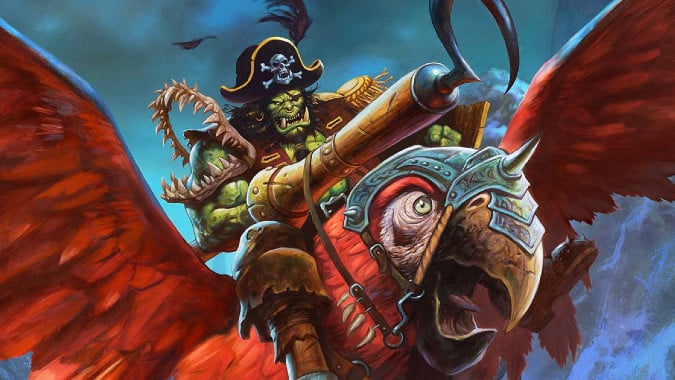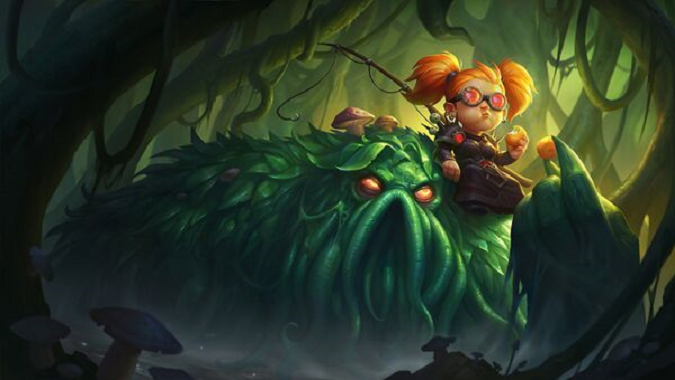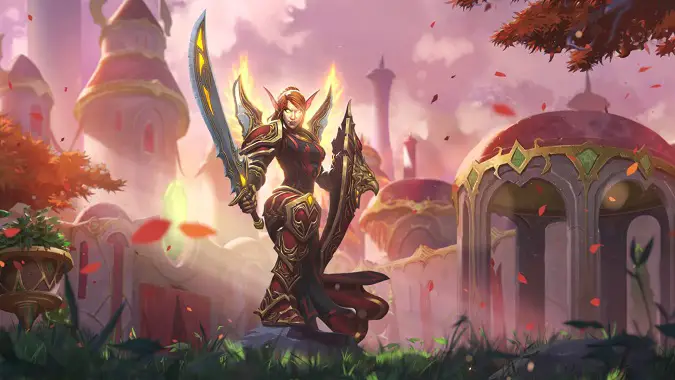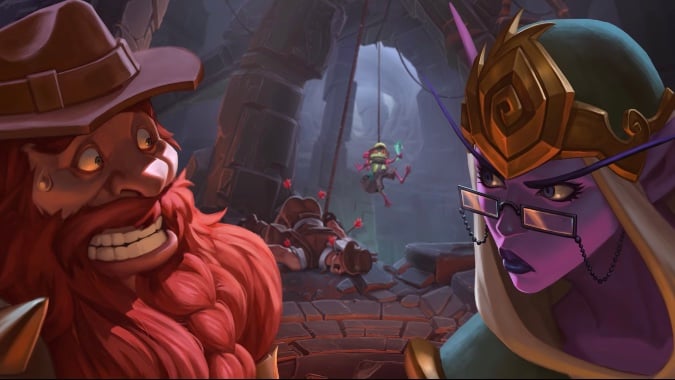How to pick substitute cards for a winning Hearthstone deck

There are many common situations where a Hearthstone player might find themselves needing to substitute cards in a deck. Maybe you found some interesting deck online, but your collection is missing a few key cards. Maybe you’ve been playing a certain deck, but it’s not performing the way you wanted. Whatever may be the case, deck-building is a complicated trade, and the question of “which card should I put in place of X?” is a very common one.
So, let’s talk about how can you learn to do that. What does it take to pick the perfect replacement for a card you’re missing — or to find out which card to replace in the first place?
Learn what type of deck you’re playing (and the game plan to play it well)
No card is selected randomly — at least, not for decks that are trying to win games. And every deck is trying to win games in a different manner. Let’s talk about the basic archetypes you will find not only in Hearthstone, but in most card games out there.

Aggro decks
These decks try to deal as much damage to the opponent’s face as possible, as quickly as possible. They often disregard eliminating enemy threats, since that just slows them down. The key is winning so fast that the opponent doesn’t even have time to use said threats.
Card draw is, arguably, more important for Aggro than for other deck types. Since they aim for short, quick games, many of their cards are low in cost — which means that they will get played fast. If the player doesn’t have a way to refill their hand, they’ll often run out of ways to damage the opponent and easily be overtaken.
Aggro decks will rarely want to have too many high-cost cards. They want to dump their hands as fast as possible, because they aim to maximize damage as fast as possible, lest their opponent catches up to them.

Control (and Combo) decks
These decks keep control of the board by removing enemy minions until they find their “win condition” — the set of cards (or actions) they need to close the game. That win condition could be:
- A specific combo that will allow you to kill your opponent when it’s played. A common example is the famous “Exodia Mage,” which pairs Archmage Antonidas with multiple copies of Sorcerer’s Apprentice in order to generate infinite Fireballs.
- One or more large threats, like strong minions that you will be able to summon once you have enough mana and full control of the board.
- Mere attrition — that is, making your opponent run out of gas until they can no longer kill you and they just give up.
These decks are often based on value. They want cards that allow them to accomplish a lot when cast. For example, a card like Ultimate Infestation, which is the utmost example of “value” this game has ever seen. It costs 10 mana, sure, but it does a lot for that cost: it deals damage, draws cards, adds armor, and summons a 5/5 minion.
These decks don’t value tempo as much — that is, they might go for an entire turn without doing anything to affect the state of the game. (Hence, the memes about Control Warriors often having several turns where they simply Armor Up! and pass.)
Control decks won’t have many weak, disposable tools. They aim to stay alive until they can cast their costly, powerful spells and minions.

Midrange (and Tempo) decks
The last common type of deck is midrange. These are not as aggressive as aggro decks nor as controlling as control decks, but they can adapt to either type under specific circumstances.
These decks often have cards that can allow them to perform either role, depending on the opponent, without fully committing to a single strategy. Therefore, knowing your opponent’s deck is, arguably, more important for midrange than for other deck types.
These decks will also often be tempo-based more than value-based. They’re looking for cards that will have immediate impact on the board when played. Since their decks have to be malleable rather than committed to a single strategy, every card they play matters a lot.
That’s the definition of tempo: playing cards that change the state of the board more than your opponent is capable of, so that you’re always one step ahead of them. In other words, playing cards that simultaneously remove enemy threats and develop threats of your own.
- For example, a minion like SI:7 Agent, which has a solid body and also a Battlecry effect that deals damage to — and hopefully kills — an enemy minion, is a good example of a high tempo card.
Midrange decks will often play “on curve.” That is they will always want to have a strong card to play on turn 1, a strong card to play on turn 2, etc. Their goal is to have a fast-enough beginning to not be overtaken by aggro, but also minions that are sturdy enough to let them defeat control decks before those decks reach their win conditions.

Identifying what the card you’re trying to substitute does
So you want to replace a card. What is that card trying to achieve? You have to think beyond merely “this is a 4/5 minion that costs 4 mana” and understand why the card is in the deck to find a good replacement.
Whenever you’re replacing a card, ask yourself these questions:
- What is the card’s role? Is it supposed to help you defend against enemy aggression or deal as much damage as possible to your opponent?
- Is it supposed to be played early in the game, or later on?
- What is it being used for?
- Its stats? Is it a minion that’s supposed to hit the board and survive for a few turns while killing other minions?
- Its effect? Does it let you draw a card or kill an enemy minion?
- Its interaction with some other card? Is it part of a combo, no matter how big or small?
- Its synergy with the main idea behind your deck? Let’s say your deck is trying to cast as many damage spells to the opponent’s face as possible with a card like Kael’thas Sunstrider. What other cards could help you accomplish that?
- Is it meant as removal?
- Against a single strong minion, like Execute or Assassinate?
- Against several small minions, like Flamestrike or Holy Nova?
- Is it meant to draw you cards?
- Just drawing “in general,” in order to help you reach more of your deck?
- Is it fishing for some specific card?
- A card like Wrathion is aimed at drawing Dragons, specifically.
- Shadow Visions, on the other hand, tries to give you extra copies of certain specific spells.
- Is it a “cycle” card — that is, a card with a small effect that you want to use as soon as possible in order to go deeper into your deck sooner?
- Good examples of cycle cards are Hand of A’dal and Crimson Sigil Runner.
- Does this card have high value? Is your deck based on out-valuing your opponent?
- Does this card have high tempo? Do you need to constantly “have the board” in order to win?
It’s a lot to consider. That is a skill that you will have to develop with time, as you look at the decks you play with an analytical eye. But once you do identify what is the exact function of that card is, it becomes much easier to take a look at your collection and find a workable replacement — something that accomplishes the same goal, even if it’s a little worse.
Trial and error is crucial here. You need to try out the changes in your deck, while always being mindful of which cards are working for your strategy and which ones aren’t.
Then you make changes and test out those changes. The bigger the sample size you can get, the better. If a card hasn’t worked for you in four or five games in a row, chances are it’s a good candidate to be cut.

Some cards can’t be replaced
The truth is that certain cards — especially Legendaries — often have unique effects. If you’re simply trying to close a game, you would often add Leeroy Jenkins to your deck, for six immediate damage due to Charge. Assuming you didn’t have Leeroy, you could safely replace it with a cheaper substitute like Reckless Rocketeer because Leeroy’s effect isn’t unique. The Rocketeer will deal one less damage and cost one more mana, but the function of the card is exactly the same.
But that isn’t the case with a card like Kael’thas Sunstrider. The card makes the third spell you cast free, an effect that simply can’t be found anywhere else. Many decks often revolve around this specific card and there’s no replacement at all. In that case, trying to find something else that accomplishes the same function is fruitless. You either bite the bullet and craft it or you play a different deck.
And that’s it! I hope this guide has been useful in allowing you to understand deck-building a little better, and honing your skills, so that you can make the decks that you find out there work for you — no matter what your collection looks like.
Please consider supporting our Patreon!
Join the Discussion
Blizzard Watch is a safe space for all readers. By leaving comments on this site you agree to follow our commenting and community guidelines.
 @harmonicstrike
@harmonicstrike




